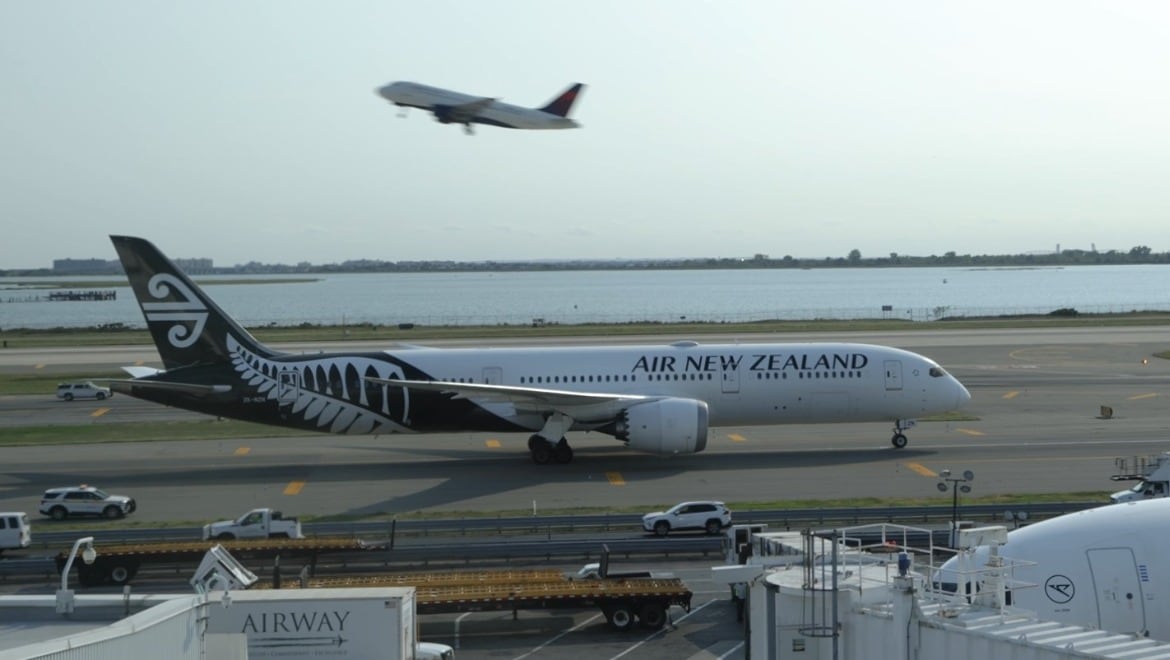
Air New Zealand’s troubled ‘non-stop’ service between New York and Auckland will now fly the entire distance direct as intended, despite passengers on the upcoming flight previously being warned of a stopover.
Air New Zealand originally announced that strong headwinds would force NZ1 to stop in Nadi, Fiji. The flight is scheduled for October 26 Eastern Daylight Time.
This is not the first time the new service, the fourth-longest in the world, has run into complications with its nonstop promise, with a previous flight asking 15 passengers to get off the aircraft to save weight. Another instead removed luggage and put it on another flight.
Critics have suggested the 787-9’s range simply isn’t long enough to accommodate the 16 or 17-hour flight if unforeseen events cause it to have to slightly change its route.
The distance issues come because the 787-9s have a traditional range of 14,010km, far shorter than the A350-1000s that Qantas will eventually use to fly Project Sunrise flights to New York and London, which can travel for near 18,000km.
Air New Zealand COO Alex Marren earlier said it was decided that the scheduled flight would add the fuel stopover due to a “combination of strong headwinds caused by jet streams and turbulence across the USA”.
“Our priority is getting customers to where they need to go safely,” said Marren. “It’ll mean a short stop in Nadi to refuel and swap over crew, which means NZ1 will arrive into Auckland around five hours later than expected.”
Had the layover gone ahead, it would have been the first flight to have had to stop since its launch in September, one which the company previously branded a “gas and go”.
The embarrassing issues come despite Air New Zealand launching the service with great fanfare and designating it the prestigious ‘NZ1’ flight number for its 17-hour flight from New York to Auckland, and NZ2 for the 16-hour reverse.
“As one of the world’s greatest cities, Air New Zealand is proud to add the Big Apple to its list of 29 international destinations,” said the airline’s CEO, Greg Foran.
“By adding greater access to the East Coast of the US, we’re connecting our North American customers to the possibilities of 20 destinations within New Zealand as well as the Pacific and Australia, all within easy reach. This is terrific for our customers.”
The carrier will soon serve seven destinations in North America: Chicago (from 31 October), Honolulu, Houston, Los Angeles, San Francisco, Vancouver, and New York City.
Qantas is planning a similar service to the Big Apple from Australia via Auckland using the same 787-9s from 14 June next year.
However, the Flying Kangaroo pointed to an earlier statement that the aircraft it ordered would be designed “with more room and fewer seats than most of our competitors”. It said the Dreamliner cabins are “well suited to longer international flights”.
Qantas has also been using the same aircraft for its 15-hour flights from Perth to Rome.
















Copernican
says:Not sure why this merits an article. It is not unusual. The Qantas 747 flight from Dallas to Sydney normally made a fuel stop in Brisbane on the return leg – and at least once routed via Auckland to refuel, which was great for me as a passenger as AKL was my final destination so I avoided two trips across the Tasman.
Graham Haxell
says:Time to get a decent aircraft that’s suited to fly the distance – either B787-10 or A350-1000.
Evan
says:The aircraft ‘departing’ in the image is neither an ANZ aircraft or a Dreamliner. The ANZ aircraft in the image is taxiing for departure. Aviation could be more accurate?